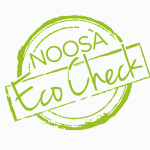Self Managed Superannuation Funds (SMSFs) have grown rapidly in recent years, attracting increased attention from the ATO — and rightly so.
With more individuals choosing to take control of their super, the tax office is watching closely to ensure trustees are keeping their houses in order.
So, let’s revisit the basics — and along the way, use a little backyard cricket to explain the moving parts.
The SMSF Setup — Trust, Trustee, Members & Deed
Every SMSF has four essential components:
The trust deed: This is the rulebook — the document that governs how your fund operates.
The trust: Think of it like the esky — it holds all the fund’s assets.
The members: They’re the players in the game.
The trustee(s): They’re the umpires, ensuring the rules are followed.
Unlike the backyard version, however, there’s a serious governing body watching on — the ATO. If the umpire (trustee) lets things slide or members help themselves to the esky before they’re allowed, the ATO can step in, take half the esky’s contents, and shut the game down entirely.
Key Rules to Know
A complying SMSF must meet several conditions:
– It can have up to six members.
– All members must be trustees (or directors of a corporate trustee).
– No member can be employed by another, unless they’re related.
– Trustees generally can’t be paid for their trustee duties.
The Trust Deed & Trustee Responsibilities
Two elements deserve special focus:
The Trust Deed – The deed sets out how the fund operates — both now and in future. It’s essential that it’s kept up to date with legislative changes and tailored to reflect your intentions.
The Trustee
The trustee carries the most responsibility — and liability. Whether individuals or a corporate trustee, they are legally bound to: Act honestly and prudently, Separate fund assets from personal ones, Act in the best interests of all members and Develop and maintain an investment strategy. Put simply to ensure full compliance with the Superannuation Industry (Supervision) Act 1993 (SIS Act) and regulations.
While trustees can appoint professionals — like financial advisers, accountants or administrators — to help manage the fund, they cannot outsource accountability. The buck stops with them.
So, Is an SMSF Right for You?
Managing your own super can be incredibly rewarding — giving you control, flexibility, and potential cost benefits.
But it also comes with legal, financial, and administrative obligations that must be taken seriously.
It’s not backyard cricket anymore — it’s the real deal, and the umpire wears a suit.
For more information call Ord Minnett Noosa on 07 5231-9966 or visit www.ordsnoosa.com.au
Chris Harris is an Authorised Representative (no 427052) of Ord Minnett Ltd ABN 86 002 733 048, AFS licence 237121. This article does not contain legal advice, and only contains general financial advice. Your
personal circumstances has not been considered; you should determine its suitability to you. Before acquiring a financial product you should consider the relevant product disclosure statement. Past performance is not a reliable indicator of future performance. Chris can be reached on 07-5231-9966








